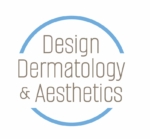What are they?
Skin tags are usually harmless and painless. Skin tags, also called acrochordons, soft fibromas, or fibroepithelial polyps, are small noncancerous, or benign, skin growths. They are often flesh-colored bumps of tissue connected to the skin’s surface by a narrow stalk. The color, texture, size, and width of the base can vary. As we age, and if we are prone to skin tags, they become more common as we advance in years. It is not known what causes skin tags, but the good news is they are not cancerous and do not pose other health concerns. The main symptom is a growth on the skin, often on the neck, upper chest, underarms, and eyelids. They may become irritated from rubbing against clothing. Most of these don’t require treatment. If a skin tag is irritated or its appearance is bothersome, a doctor can remove it.
What causes them?
Most of these don’t cause symptoms unless they are repeatedly irritated by rubbing against jewelry, clothing, or other items. The tags are harmless, but they won’t go away without treatment. A reason for treatment may include irritation or if you don’t like the way the skin tag looks. Friction can also play a role in the development of these. Frequently, they develop on the neck, underarms, and eyelids, as well as within body folds, such as under the breasts or in the groin area. In some cases, these seem to be associated with obesity, and genetic factors also appear to play a role. Unfortunately, there’s no way to minimize the risk of developing skin tags.
Common treatments
If you have skin tags that are irritated, or you just don’t like where they have developed, we are here to help. Skin tags can be removed in several ways, they can be cut off with scissors or excision, but minor bleeding could occur. Freezing or burning, the skin tag may require a short time to fall off, and these procedures have a risk of skin discoloration, darkening, or lightening, following the procedure. Sometimes, repeat treatments are necessary if the tag doesn’t fall off or it grows back, or if new tags grow in other areas. If you are concerned about your skin tags ask your dermatologist about how to treat your skin. Our goal is that you look your best, so make an appointment today if you have skin tags and want to remove them. Reveal your best skin yet—schedule your personalized consultation at Design Dermatology & Aesthetics today.

